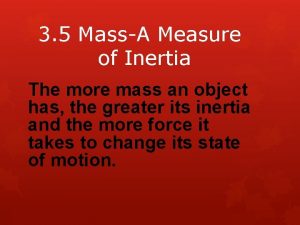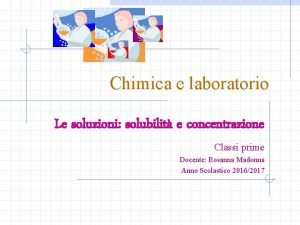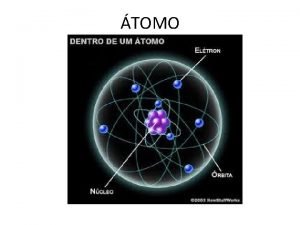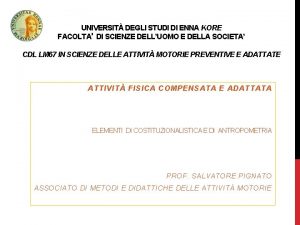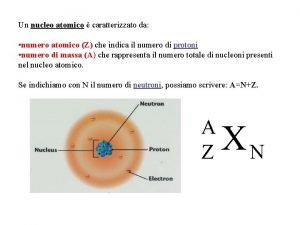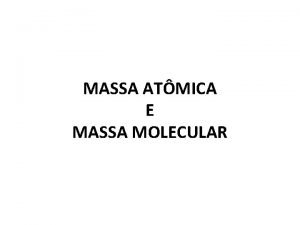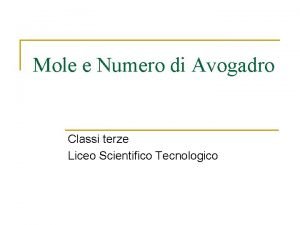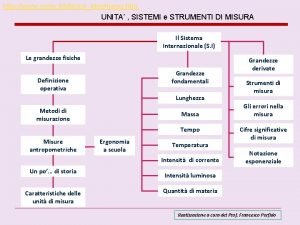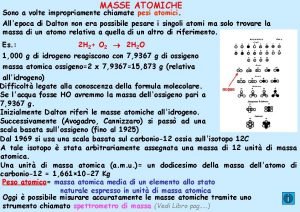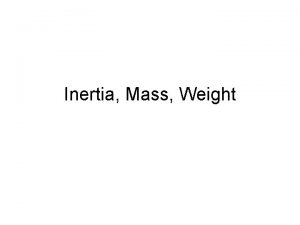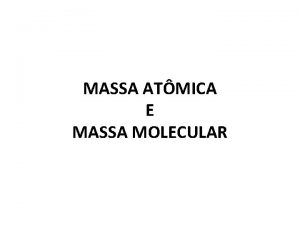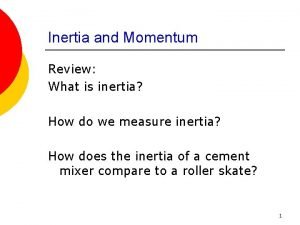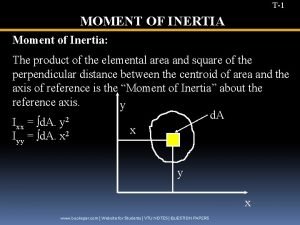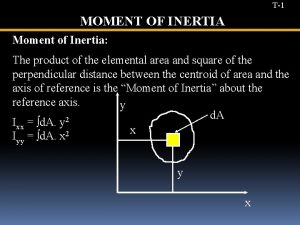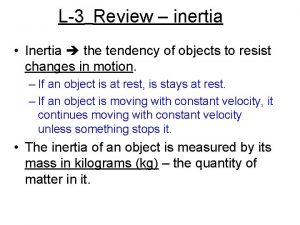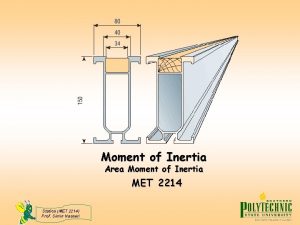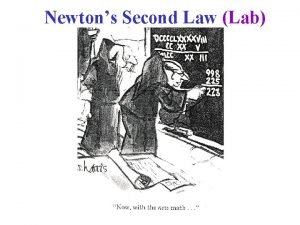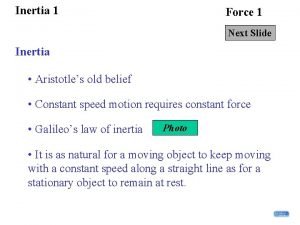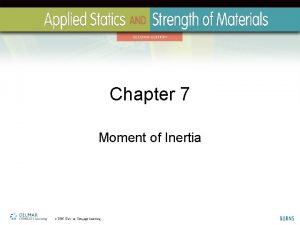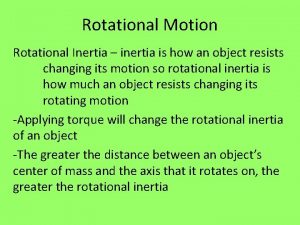3 5 MassA Measure of Inertia The more





















- Slides: 21

3. 5 Mass-A Measure of Inertia The more mass an object has, the greater its inertia and the more force it takes to change its state of motion.

3. 5 Mass—A Measure of Inertia The amount of inertia an object has depends on its mass—which is roughly the amount of material present in the object. Mass is a measure of the inertia of an object.

You can tell how much matter is in a can when you kick it. Kick an empty can and it moves. Kick a can filled with sand it doesn’t move as much.

Mass Is Not Volume Do not confuse mass and volume. • Volume is a measure of space and is measured in units such as cubic centimeters, cubic meters, and liters. • Mass is measured in the fundamental unit of kilograms.

Which has more mass, a feather pillow or a common automobile battery? Clearly an automobile battery is more difficult to set into motion. This is evidence of the battery’s greater inertia and hence its greater mass.

The pillow has a larger size (volume) but a smaller mass than the battery.

Mass Is Not Weight Mass is often confused with weight. • We often determine the amount of matter in an object by measuring its gravitational attraction to Earth. However, mass is more fundamental than weight.

Mass is a measure of the amount of material in an object. Weight, on the other hand, is a measure of the gravitational force acting on the object.


Mass Is Inertia The amount of material in a particular stone is the same whether the stone is located on Earth, on the moon, or in outer space.

The mass of the stone is the same in all of these locations. The weight of the stone would be very different on Earth and on the moon, and still different in outer space.

The stone’s inertia, or mass, is a property of the stone and not its location. The same force would be required to shake the stone with the same rhythm whether the stone was on Earth, on the moon, or in a forcefree region of outer space.

It’s just as difficult to shake a stone in its weightless state in space as it is in its weighted state on Earth.

We can define mass and weight as follows: • Mass is the quantity of matter in an object. More specifically, mass is a measure of the inertia, or “laziness, ” that an object exhibits in response to any effort made to start it, stop it, or otherwise change its state of motion. • Weight is the force of gravity on an object.

Mass and weight are proportional to each other in a given place: • In the same location, twice the mass weighs twice as much. • Mass and weight are proportional to each other, but they are not equal to each other.

One Kilogram Weighs 10 Newtons It is common to describe the amount of matter in an object by its gravitational pull to Earth, by its weight. • In the United States, the traditional unit of weight is the pound. In SI units, the measure of matter is commonly expressed in units of mass, the kilogram (kg). • At Earth’s surface, 1 kilogram has a weight of 2. 2 pounds.

The SI unit of force is the newton (N). If you know the mass of something in kilograms and want its weight in newtons at Earth’s surface, multiply the number of kilograms by 10.

One kilogram of nails weighs 10 newtons, which is equal to 2. 2 pounds. Away from Earth’s surface, where the force of gravity is less, the bag of nails weighs less.

think! Does a 2 -kilogram bunch of bananas have twice as much inertia as a 1 -kilogram loaf of bread? Twice as much mass? Twice as much volume? Twice as much weight? when weighed in the same location?

Answer: Two kilograms of anything has twice the inertia and twice the mass of one kilogram of anything else. In the same location, where mass and weight are proportional, two kilograms of anything will weigh twice as much as one kilogram of anything. Except for volume, the answer to all the questions is yes.

https: //www. youtube. com/watch ? v=o 5 m. L 2 Y 2 WNDs
 Lirik lagu more more more we praise you
Lirik lagu more more more we praise you More more more i want more more more more we praise you
More more more i want more more more more we praise you What is the relationship between inertia and mass
What is the relationship between inertia and mass Is a measure of inertia
Is a measure of inertia Concentrazione percentuale massa su massa
Concentrazione percentuale massa su massa Formula massa molar
Formula massa molar Plicometro
Plicometro Numero di massa e numero atomico
Numero di massa e numero atomico Massa atômica
Massa atômica Aumento ponderale
Aumento ponderale Calcolo mole
Calcolo mole Sifat integral lipat dua
Sifat integral lipat dua Rapporto massa grassa massa magra
Rapporto massa grassa massa magra Massa molare
Massa molare Gibbons jacobean city comedy download
Gibbons jacobean city comedy download Air temperature
Air temperature Aspire not to
Aspire not to Human history becomes more and more a race
Human history becomes more and more a race Knowing more remembering more
Knowing more remembering more The more you take the more you leave behind
The more you take the more you leave behind More love to thee o lord
More love to thee o lord The more you study the more you learn
The more you study the more you learn



